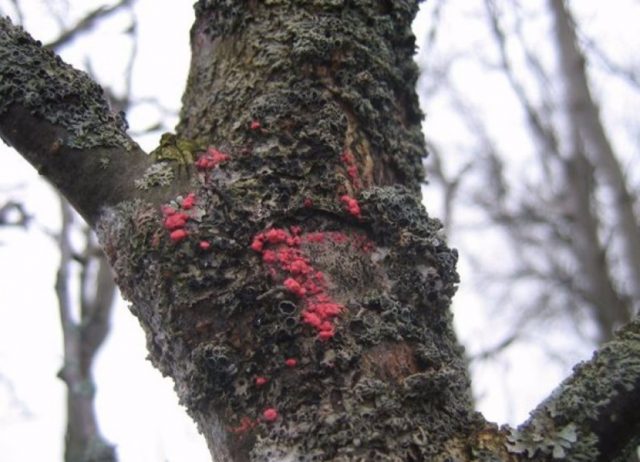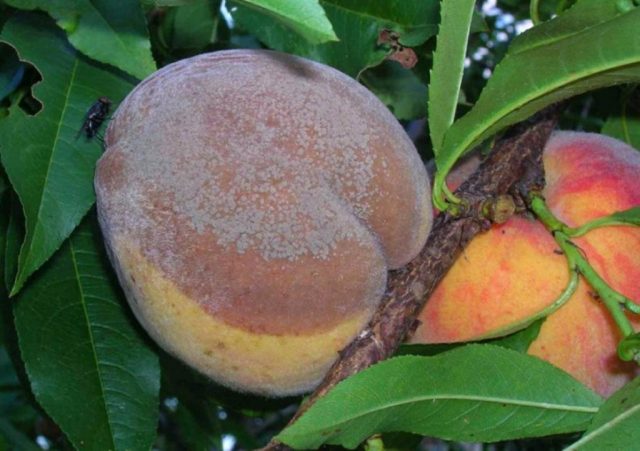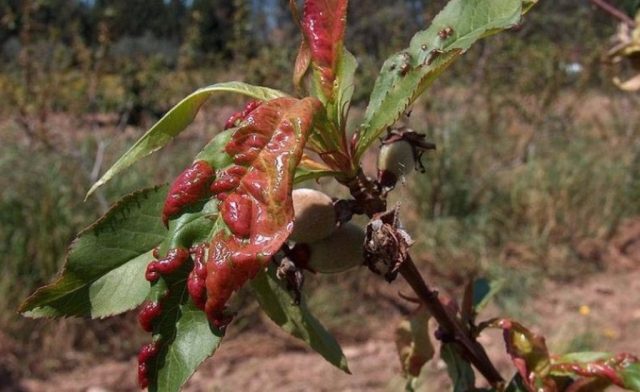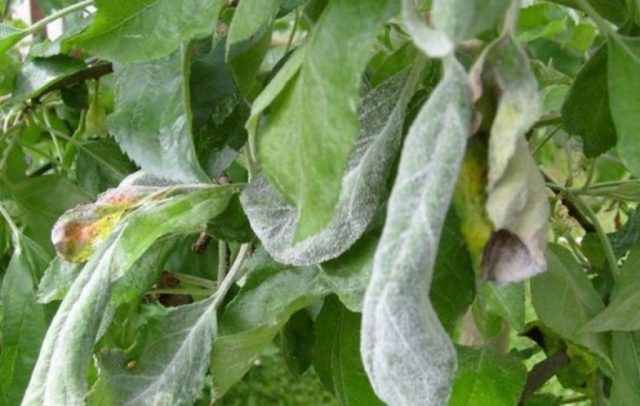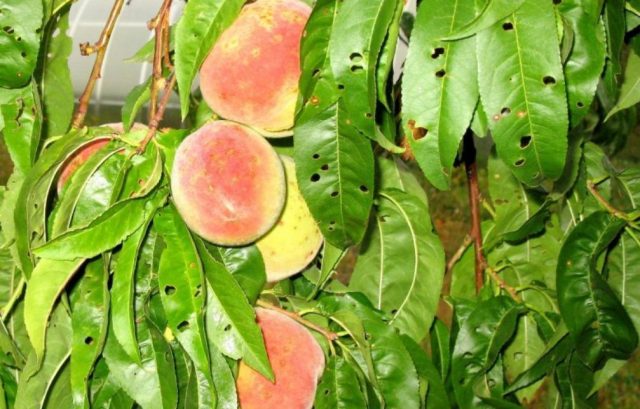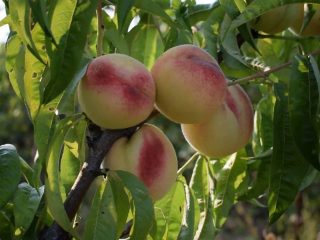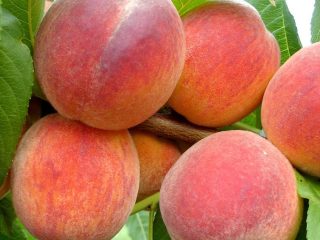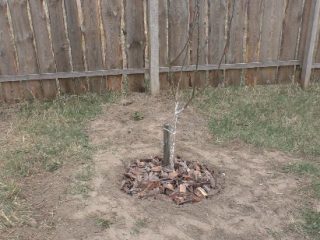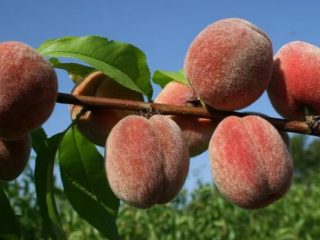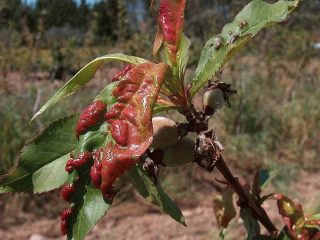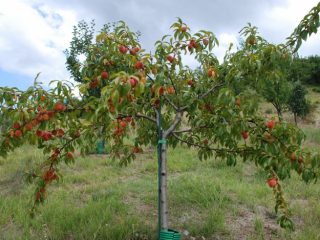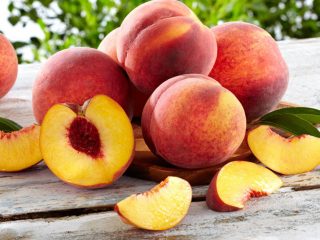Content
Growing a peach orchard is not an easy task. Changeable weather, diseases and pests often leave gardeners without a harvest. Treating a peach is a long process that takes a lot of effort. Therefore, to reduce the risk of disease, it is necessary to spray peach in spring and autumn.
Purposes of processing peaches in the spring
Peach is a capricious tree that needs proper care and regular preventative measures. To grow a healthy plant, it is necessary to fertilize and irrigate the land and fight diseases in a timely manner. Experienced gardeners know how important spring cultivation is.
Treatment of peach trees in the spring is necessary to destroy pests and fungi overwintering in the bark and fallen leaves. Correctly carried out spring treatment will protect the tree from diseases and help preserve the harvest.
When can you spray peach trees?
Spring treatment is carried out several times:
- until the buds swell;
- during the period of leaf blossoming;
- during and after flowering.
The most important treatment for peach diseases is before the buds swell. The timing of prevention in early spring depends on climatic conditions. The main requirement is that the air temperature should not be less than + 4 °C. In warm regions, treatment is carried out on the 20th of March, in regions with an unstable climate - at the end of April.
Prevention is carried out with a break of several days. To do this, use copper-containing fungicides and diesel emulsion.
Spring processing is necessary for both adult and young peach. This is explained by the fact that awakened mushrooms and pests stop growth and development, which leads to a decrease in yield.
- When the leaves bloom, they are sprayed against curls and scabs. To do this, 0.4 kg of lime and 0.3 kg of copper sulfate are diluted in a bucket of warm water.
- Treatment on the bud will increase immunity and will be an excellent prevention against many diseases, including powdery mildew and moniliosis.
- The last spring spraying is done after flowering. It is necessary for the fixing effect and saturation of the tree with nitrogen.
To protect peaches from fungal diseases, there are many drugs - fungicides. For spring processing of peach, proven preparations are used:
- copper-containing preparations – destroy fungal infections;
- urea – saturates the tree with nitrogen;
- diesel fuel emulsion – covers the plant with a transparent film;
- nfolk remedies – lavender, garlic, tobacco.
Before processing, you must carefully read the instructions to know the dosage, timing and timing. To avoid the transfer of chemicals throughout the garden, prevention is carried out in calm weather, in the morning or evening hours.
The first treatment is carried out using a watering can with large holes. This will allow the chemical to penetrate microcracks and lead to the death of fungi and parasites. For maximum effect, experienced gardeners advise taking complex measures: simultaneously spraying the peach with fungicides and insecticides. Since insect pests are carriers of fungal diseases.
Is it possible to spray a peach during the flowering period?
During peach flowering, 2 treatments are carried out: after all the buds have bloomed and after 2 weeks, when some of the petals have fallen off. Both sprayings are carried out for the purpose of prevention against fungal diseases and to increase immunity.
Chemicals cannot be used for this purpose, as they can harm pollinating insects. The exception is serious diseases or if more than ½ of the buds have died, the drugs “Decisom” or “Aktaroy” are used. The harvest after treatment will be insignificant or completely absent, but you should not be upset, since the treatment will rid the peach of the disease and grow a healthy tree for the next season.
In order for the peach to bear fruit generously, you need to know common diseases, their photos and treatment. Timely help will help the peach recover faster and prevent the fungi from spreading throughout the area, infecting neighboring plantings.
Diseases of peach trees and their treatment
All peach diseases are conventionally divided into 3 groups: diseases of the leaf blade, trunk and fruit. Timely control of diseases is an important step towards a healthy, generous harvest.
Cytosporosis
Cytosporosis is a dangerous fungal disease that affects the layer located between the bark and wood. The first symptoms of the disease are the formation of dark brown spots on the bark and wilting of the shoot tip. The fungus attacks the tree from above, infecting young shoots and stem branches. Once the fungus spreads to the trunk, the peach will be in serious danger.
If you do not start timely treatment, you can lose a large number of fruit branches and jeopardize the yield and future life of the tree.
When a disease is detected, all affected branches are shortened to a length of 0.8-1.5 m, and in case of severe infection, the entire skeletal branch is removed to healthy tissue. The cut area is covered with garden varnish. Cut branches are burned, as fungal spores are easily carried by the wind and can settle on neighboring plantings.
To get rid of the fungus, the peach is treated with 3% Bordeaux mixture (300 g of copper sulfate and 400 g of lime are diluted in a bucket of water).
Moniliosis
Moniliosis, fruit rot or monilial burn is a dangerous, common disease that appears on foliage, flowers, fruits and shoots. The disease on peach begins to develop in early spring. If help is not provided, the fungus leads to the drying out of flowers and ovaries, and the death of young fruit-bearing shoots. During summer infection, the stem branch may die. On fruits, the fungus appears in the form of dark spots that quickly grow and penetrate inside.The peaches turn brown inside, dry out and fall off. If an infected peach comes into contact with a healthy one, it also becomes infected. A chain reaction occurs, and without treatment, all the peaches on the tree begin to rot and fall off.
The disease on peach often appears in cold and wet weather during the flowering period. The carriers of the disease are weevils and codling moths. In winter, the fungus is found in the affected branches and, when warm days arrive, it attacks large branches with renewed vigor.
You can get rid of fungus in 2 ways:
- Affected shoots are burned and rejuvenating pruning is done in the fall.
- During flowering, the crown is sprayed with 1% Bordeaux mixture or 90% copper oxychloride solution.
Leaf spot
Leaf spotting or curling appears in a wet, protracted spring, primarily affecting young foliage. Red spots appear on the peach leaves, and after a week the inside becomes covered with a gray coating. Over time, the affected foliage turns black, becomes brittle, dries out and falls off. As a rule, the fungus infects young shoots, they become yellow in color, bend and dry out. If you do not start timely treatment, the peach will lose all its leaves, begin to dry out, and the tree will die.
If the disease is detected early, it is necessary to act immediately. All infected shoots are cut out and burned. Next, the wood is treated with copper-containing preparations. Treatment is carried out in 3 stages with an interval of 14 days.
Powdery mildew
The disease appears in the first half of May on the inside of young foliage, then the fungus moves to the tops of the shoots and affects the fruits.Diseased peach leaves take the shape of a boat and fall off over time.
In the initial stage, the disease can be identified by a white coating, which can be easily removed with a finger. Without treatment, the leaf blade becomes coarser and turns brown. If the disease attacks the tree during fruiting, the fruits crack and grow deformed. If treatment is not started in a timely manner, a black coating appears on the peaches, they rot and crumble.
The peak of the disease occurs in mid-summer, during a period of sharp temperature changes. To save the tree, it is necessary to begin treatment when the first signs appear. To do this, the affected shoots are removed, the fallen leaves are collected and burned, since fungal spores are carried by the wind over long distances. The main treatment is to treat the peach after flowering with Topaz or Topsin. Autumn and spring pruning of affected shoots is also effective.
Clusterosporiasis
Clusterosporiasis is a widespread fungal disease. Disease activity is observed 2 times a year. Primary infection appears in early spring, when overwintered spores begin to attack the peach with renewed vigor. When the optimal temperature and humidity conditions are reached, the first signs of the disease begin to appear. Crimson spots appear on young foliage, which grow over time. Part of the leaf dies and falls off, forming small holes on the leaf blade.
With severe infection, the spores affect the entire above-ground part: leaves, shoots, flowers and fruits. The shoots are covered with brown spots with a black border. As the spot grows, the bark cracks and gum leaks from the affected area.
When fruits are damaged, dark maroon spots form on them, which without treatment grow and take on a wart-like shape. The upper part falls off, and gum begins to ooze from the ulcers.
Help consists of spring and autumn sanitary pruning and treating the peach crown before and after flowering with fungicides.
Fighting peach diseases with folk remedies
Peach is often affected by various diseases, but in order to reap a generous harvest, it is necessary to begin the fight against them in a timely manner. Many gardeners use folk remedies for this; they are effective, non-toxic, and do not threaten pollinating insects.
One of the best remedies is lime diluted with clay. The solution has fungicidal properties and prevents the development of diseases. To prepare the drug, 90 g of slaked lime and 350 g of softened clay are diluted in a bucket of warm water. Mix everything thoroughly until a homogeneous solution is obtained. The prepared preparation is sprayed on the tree early in the morning or in the evening.
Treatment in this way improves the biological and physico-chemical characteristics of the peach, while also nourishing them with mineral elements.
How to spray peaches for prevention
So that the peach leaves do not turn yellow or fall off, and the tree bears fruit well and develops, you need to listen to the advice of experienced gardeners:
- In the fall, before processing, sanitary pruning is carried out. The cuts are covered with garden varnish, the branches and leaves are removed and burned.
- In autumn and spring, the crown is sprayed with copper-containing preparations. It is better to carry out the procedure in calm, dry weather.
- Spraying is carried out in the morning after the dew has disappeared.
- Spring treatment is done through a large sprayer so that the drug penetrates into all microcracks where fungal spores often overwinter.
- The maximum effect is achieved if you alternate fungicides with insecticides.
- Before starting processing, it is necessary to check the peach’s reaction to the drug. To do this, a young branch with foliage is treated, and if after a day the leaves of the peach have not turned yellow, you can begin to process the entire tree.
Diseases in a peach take a lot of energy, therefore, to help it recover faster, it is necessary to provide a balanced mineral and organic diet. In the first season after suffering from an illness, it is important to ration the yield, directing all efforts to a quick recovery.
It will also be important to increase immunity and restore growth and development with the following drugs:
- phytoactivators (“Stimunol”, “Albit”);
- growth stimulants (“Epin”, “Kornevin”);
- immunomodulators (“Zircon”, “Silk”).
Conclusion
Spraying peach in spring and autumn is necessary for disease prevention. With regular activities, the peach will reward you with good growth, development and high yield.


